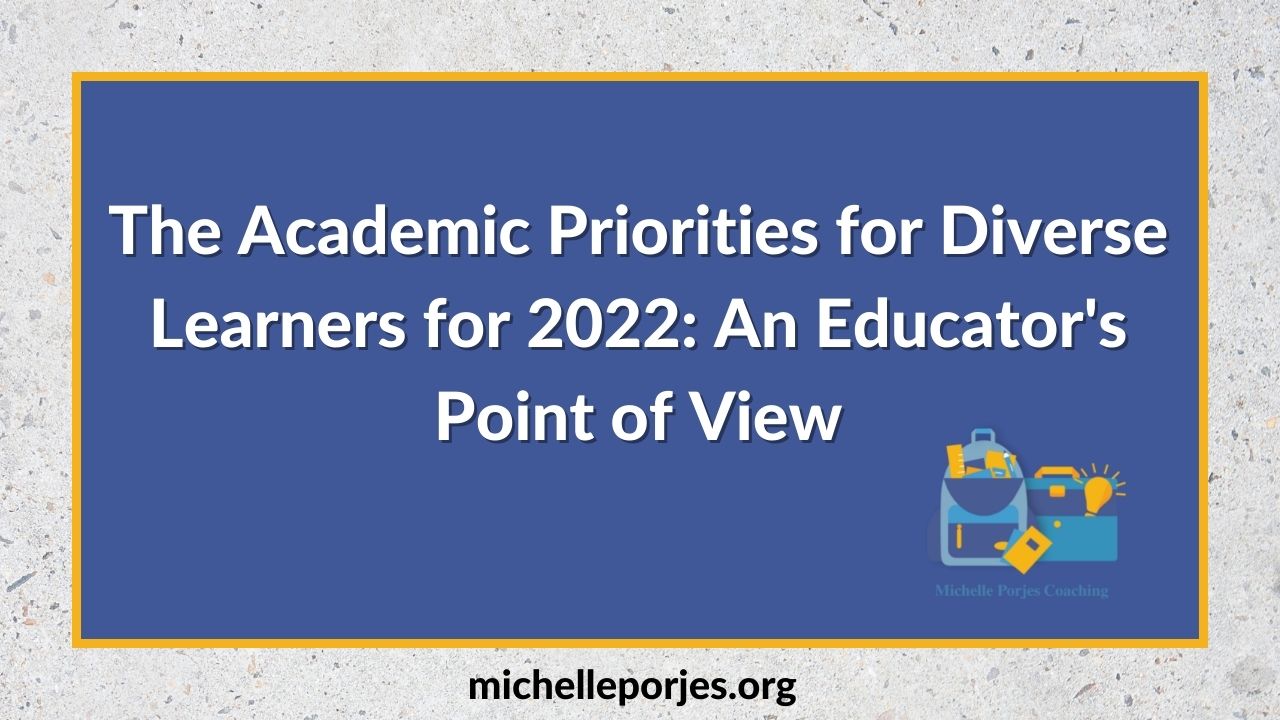by Michelle Porjes, Ed.S.
As we move into March of 2022, we are also moving into the 3rd year of the COVID experience. Although like many aspects of COVID, in education we are nowhere near where we were in February and March of 2020. In addition to understanding how to mitigate the impact of COVID on the health of educators and students, we also have strategies and gameplans for teaching children and having them engage in educational experiences.
Even as/if we move from pandemic to endemic, these last two years have been full of obstacles for educators, students, and families. And, given the disruption of school attendance and programs for teachers and students along with these obstacles, academic learning, especially for diverse learners, continues to be affected in a way that warrants additional attention.
With the Omicron surge turning the corner and new cases and hospitalizations trending downward, it seems a worthwhile endeavor to revisit a fundamental question:
For diverse learners, what shall we prioritize in education?
Here are three priorities to consider:
A Continuous Focus on Comprehending and Utilizing Directions Before Work Begins
As school leaders and teachers continue to find creative and novel ways to engage students in project based learning, academic exploration, and passion projects, the importance of creating and maintaining a systematic approach to breaking down directions is a key determinant to the success of the learning, for the teacher and learner alike. Many diverse learners feel overwhelmed by complex directions. When they are left to their own devices with complex directions, the results are less than desired. Directions for academic work are better utilized when they are part of the work to be completed and not as a form of evaluation. It is time well spent having diverse learners engage with the directions multiple times before beginning the work.
Direct Skill-Based Instruction
We need to elevate direct academic instruction of individual skills for diverse learners. One of the side effects of school disruption during the pandemic has been a reduction in engagement with individual students. In order to increase their academic competence, diverse learners routinely need additional personalized instruction in the skills necessary for academic success. This, however, cannot fall strictly on classroom teachers. As we continue to understand how to maintain safe learning environments, the use of trained volunteers, pairing of older students with those who struggle, and touchpoints with learning specialists can help to fill the individual engagement bucket and lead to academic improvements.
Leveraging What Technology Has to Offer
We need to ensure that the digital divide is shrinking and not widening. With the use of multiple platforms (each with its own login, unique features, and methods to save and share information), there are many more sets of directions to remember and opportunities to be confused if students are not given clear and explicit instructions about each platform. Many diverse learners have difficulty learning sequential information, remembering multi-step directions and, in some cases, have low frustration tolerance. Thus, an important priority is to ensure that diverse learners understand how to thoroughly use each platform being used in their education.
There is one more aspect worth considering in closing the digital gap and this is the level of keyboarding skills. Some diverse learners have sensory and physical challenges that make keyboarding difficult and monotonous. Although there are some voice-to-text programs available, improving keyboarding ease, fluency and speed could be a desirable priority.
